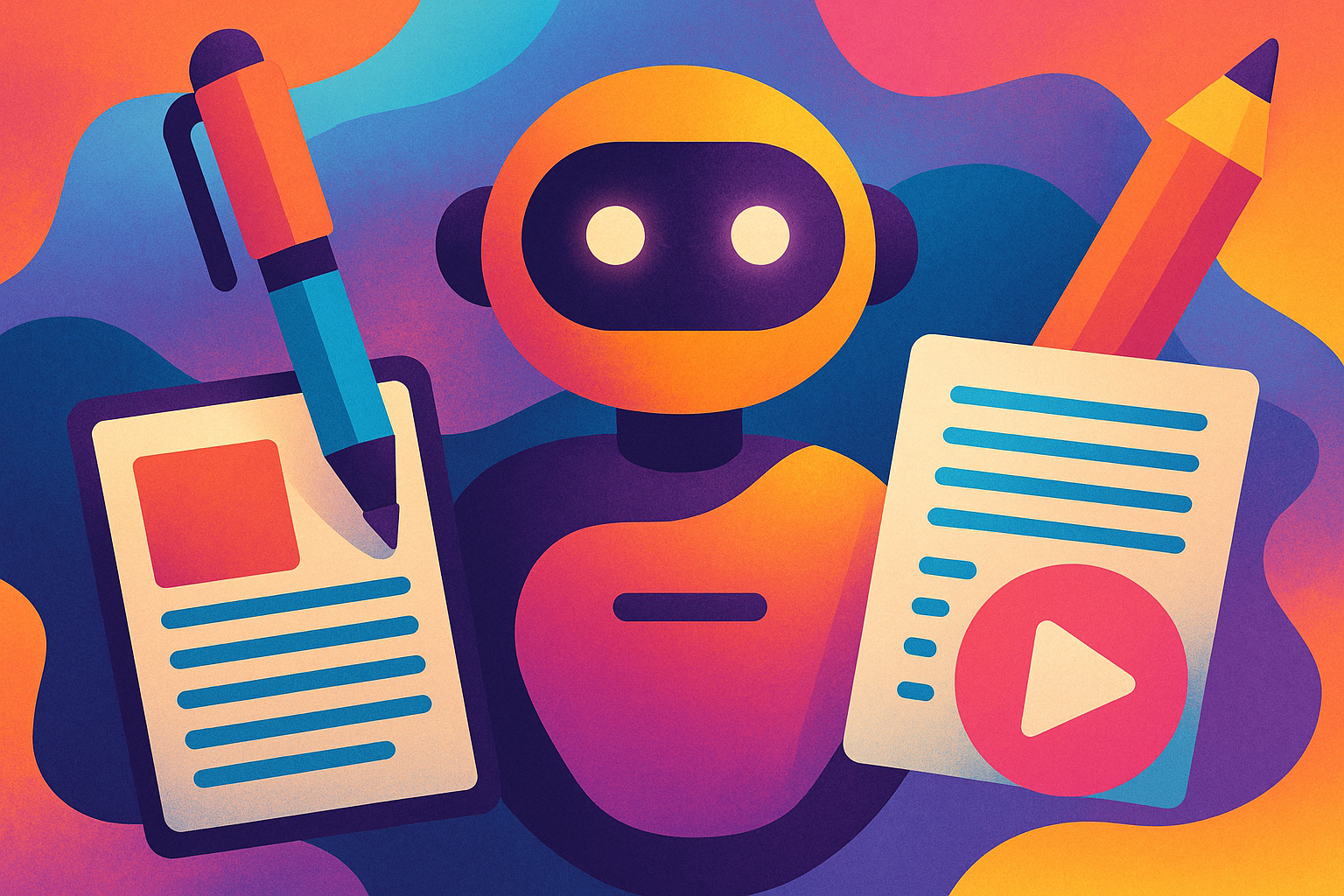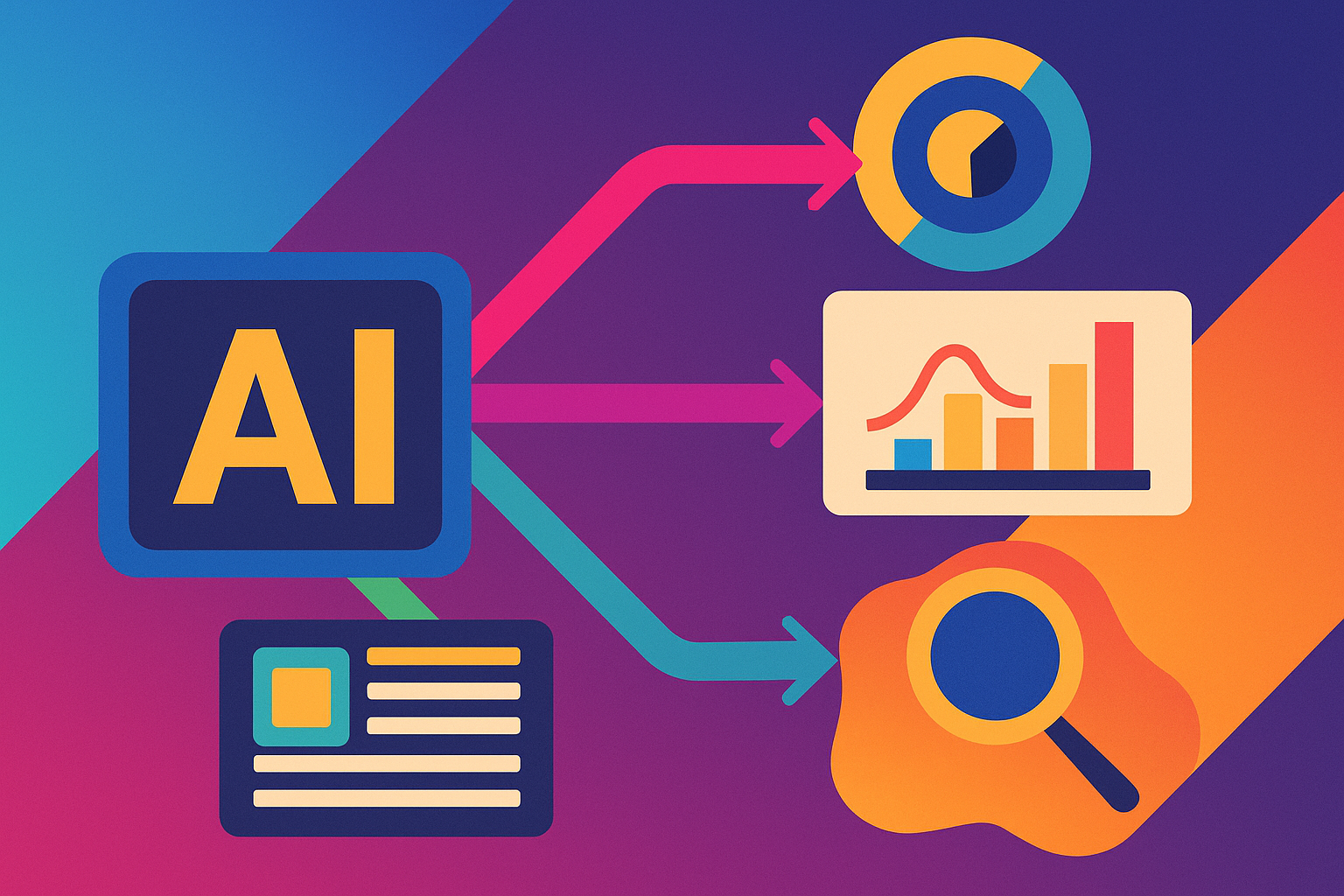AI-generated content is no longer just a buzzword - it’s a major shift in how businesses produce and distribute information. From blog posts and email campaigns to product descriptions and how-to videos, AI is reshaping the content creation process across nearly every industry.
But while many business owners are intrigued by the time and cost savings, they’re also unsure about how to use AI responsibly and whether it could damage their brand’s reputation. This guide is here to demystify AI-generated content from a business perspective. You’ll learn what it is, how it works, what your customers really think about it, and how to use it ethically and effectively.
What AI-Generated Content Really Means
At its core, AI-generated content refers to any digital material created with the assistance of artificial intelligence. That can include text, visuals, video, audio, or interactive tools. If you’ve ever used a program to help you write a blog post draft, edit an email, clean up grammar, or reword marketing copy, you’ve already participated in AI content creation.
This isn’t about robots taking over your business. It’s about using advanced software to speed up tasks that used to require manual input, freeing you up to focus on strategy, customer service, and the parts of your business that can’t be automated.
Some businesses use AI to generate first drafts of educational articles that are later reviewed and edited by staff. Others use it to turn frequently asked customer questions into web page content. Some teams even experiment with short video scripts or email marketing campaigns that begin as AI-generated outlines. When used properly, these tools can help small businesses do more with less - without compromising quality.
Why More Businesses Are Adopting AI Content
For business owners, the appeal of AI is clear. It offers a way to produce high-quality content faster, reduce dependency on external writers or expensive agencies, and respond quickly to changes in demand or customer interests.
Imagine being able to publish consistent blog posts on your website without needing to start from scratch each time. Or refreshing your product descriptions across a hundred listings in a few hours rather than days. AI makes that possible, and it’s already helping businesses increase publishing output and drive organic visibility.
In many cases, business owners aren’t looking to replace human creativity - they’re looking to accelerate it. They want tools that can help brainstorm new ideas, structure content more effectively, and improve clarity, without losing the voice and experience that makes their brand unique.
What Your Customers Think About AI Content
Despite AI’s rise, most consumers still value human connection - and that’s where many businesses get caught off guard. While customers appreciate timely, helpful content, they also want to know where it’s coming from. Recent studies have shown that a large percentage of people prefer human-made content, even if it’s not quite as polished or fast.
Transparency matters. Customers are more forgiving of AI content when they know it’s been reviewed or edited by real people. But they’re quick to disengage if they feel deceived or if the content sounds impersonal, vague, or disconnected from their needs.
In fact, a significant portion of consumers report being less engaged when they know content is AI-generated. Many say their trust in a brand would decline if they discovered all the company’s messaging came from automated tools with no human oversight. That’s not a warning against AI - it’s a reminder that your customers care about authenticity.
Can Audiences Tell When Content Is AI-Generated?
Sometimes. Text written entirely by AI often gives itself away through overly formal tone, repetitive phrases, or a lack of real-world details. It may read smoothly but feel flat—like it was written by someone who’s never actually talked to a customer.
Visual content created by AI can occasionally include odd details, like unnatural lighting, strange facial features, or inconsistent backgrounds. Audio and video content may come across as overly polished, with robotic delivery that lacks the little imperfections we associate with human speech.
However, when AI content is edited and personalized by humans, it becomes much harder to spot - and much more effective. The best AI-assisted content still relies on human input, storytelling, and experience to create something that feels genuine.
Why Some AI Content Performs and Others Flop
Not all AI-generated content is created equal. The businesses that see success are the ones using AI to enhance their workflow - not replace it. They use it to speed up research, organize thoughts, and get a head start on writing, but they still inject personal stories, local references, and brand-specific insights into the final version.
For example, a local service provider might use AI to generate a rough draft of an article about seasonal maintenance tips. But the business owner will then revise the content to include region-specific advice, real customer experiences, and references to the services they actually provide. That blend of speed and specificity is what makes the content effective - and hard to replicate.
The brands that struggle with AI are usually the ones publishing raw, unedited outputs that lack warmth or credibility. Their content may check the boxes for structure and grammar, but it misses the human nuance that makes people pay attention.
How to Use AI Ethically and Effectively in Your Business
If you’re considering using AI to create content, the most important rule is simple: don’t hand over the keys completely. Think of AI as an assistant - not a replacement. Use it to brainstorm ideas, draft outlines, summarize long documents, or rework existing text, but always maintain oversight.
Adding your perspective, correcting factual errors, and shaping content around your customers’ actual needs is what separates effective use of AI from automated noise.
It’s also wise to be transparent when appropriate. If you’re publishing educational or informational content that was created with AI, a simple note that it’s been reviewed and edited by your team can go a long way toward building trust. People don’t mind efficiency - they just don’t want to be misled.
Every business will find its own comfort level with AI. Some will use it daily, others only occasionally. But the key is to create a process where human and machine work together to produce content that is both efficient and authentic.
Staying Ahead Without Losing Your Voice
There’s no doubt that AI will continue to play a larger role in how businesses communicate. It’s faster, scalable, and increasingly hard to detect when used well. But the businesses that will thrive in this new landscape are the ones that stay grounded in their values and focused on their customers.
Your brand’s story, tone, and real-world experience are still your most valuable assets. AI can help you share them more consistently, but it can’t replace them.
Whether you’re running a single-location business or expanding across multiple markets, the future of content creation is not about man vs. machine. It’s about knowing when and how to use technology to enhance what already makes your business great.
If you’re ready to explore AI content for your business but don’t know where to begin, Theia Media is here to help you build a strategy that’s smart, ethical, and effective.









